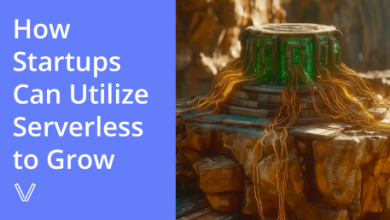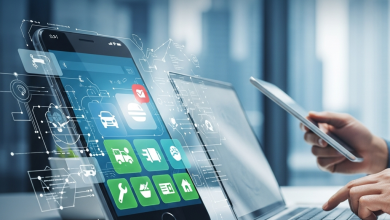Artificial intelligence (AI) is steering innovation across numerous industries, and the maritime sector is no exception. From revolutionizing cargo logistics to enabling smarter vessel maintenance, AI is rapidly becoming an integral part of maritime operations. AI is reshaping maritime industries thanks to its ability to analyze complex datasets, optimize resources, and offer predictive solutions for perennial challenges.
This post explores 10 key ways AI is bringing change to the maritime world, touching on topics like sustainability, operational efficiency, and even enhancing the consumer boating experience. Whether you’re an engineer, data developer, or business leader, these ongoing transformations could reveal exciting new opportunities to bring your expertise on board.
Optimizing Cargo and Shipping Routes
Global maritime shipping networks are intricate, often requiring efficient route planning to save fuel, time, and costs. AI tools analyze weather conditions, ocean currents, and shipping traffic to predict and recommend optimal routes. This minimizes delays and improves fuel efficiency, critical to managing rising shipping costs and environmental regulations.
Additionally, AI-driven forecasts can adjust routes dynamically, ensuring that cargo vessels avoid storms or congested waterways. By taking these variables into account, shipping companies are writing a new chapter in operational reliability.
Smart Maintenance for Vessels
Predictive maintenance is transforming the way both commercial enterprises and individual consumers manage their vessels. With AI, it’s possible to monitor mechanical systems and detect early signs of failure. For example, embedded sensors can track the factors that cause a boat’s outboard motor to overheat and alert boat operators, ultimately reducing downtime and repair costs.
This proactive approach not only ensures safer voyages but also extends the operational lifespan of ships. Efficient maintenance powered by AI is helping boat operators scale down unforeseen expenses tied to equipment failures.
Transforming Boating for Consumers
AI is revolutionizing consumer boating by making it safer and more accessible. Smart systems help users avoid hazards and optimize fuel usage while enhancing navigation. Personal boating apps use AI to interpret weather data and recommend safer routes. These tools are just beginning to redefine what’s possible on the open water for casual sailors and seasoned voyagers alike.
Enhancing Maritime Procurement With Machine Learning
AI is drastically improving transparency in procurement activities. In the world of cargo ships and oversea logistics, maritime procurement has been battling with the future of machine learning. While this particular industry is often resistant to change, the benefits of adopting new technologies have been undeniable. By applying machine learning algorithms, procurement departments can analyze supplier data, detect patterns, and identify the most cost-effective suppliers.
This technology also helps automate bidding processes, match freight demand with vessel availability, and manage materials more effectively, reducing wastage and ensuring overall cost efficiency.
Safeguarding Marine Ecosystems
AI is playing a pivotal role in environmental conservation within maritime industries. Combining satellite imagery and machine learning, researchers monitor marine health to flag any emerging issues like illegal fishing or oil spills. AI tools can analyze water quality and detect anomalies that may indicate pollution.
This application is vital for managing natural resources and enforcing regulations designed to protect oceans and wildlife. Such systems also provide governments and organizations with real-time data to make informed conservation decisions.
Autonomous Vessels for Greater Efficiency
Self-piloting maritime vessels are no longer a futuristic dream. AI technologies are making autonomous ships a reality, from ferry routes to large cargo operations. These ships use advanced algorithms, sensor networks, and GPS to operate more independently than ever before, reducing reliance on human crews.
Autonomous functions not only cut operational costs but also significantly lower human error risks. The scope of such innovation extends to precision docking, fuel-saving navigation, and even emergency maneuvers during unforeseen events.
Improving Port Operations With AI
Seaports are critical nodes in global trade networks, and their efficiency impacts entire industries. AI-powered tools streamline port operations by optimizing container handling, improving berth scheduling, and reducing wait times for vessels.
Using machine vision and AI, port operators gain real-time insights into cargo movements, enabling faster and more accurate decision-making. This information reduces bottlenecks, improves turnaround times, and ultimately enhances productivity for shipping companies.
Enhancing Safety at Sea
AI applications are like second eyes for mariners, enhancing safety on every voyage. Advanced collision avoidance systems use machine learning algorithms combined with radar and camera feeds to identify obstacles in real time. These include other vessels, drifting debris, or even marine wildlife.
Additionally, by feeding historical incident data into AI systems, operators can predict high-risk scenarios, like piracy hotspots, and plan routes to mitigate such threats. This layer of security is invaluable for ensuring the welfare of crew and cargo alike.
Renewable Energy Insights for Ocean Wind Farms
Offshore wind farms represent a crucial leap toward renewable energy, and AI is optimizing their operation. By analyzing wind patterns and oceanographic data, AI tools ensure turbines operate at peak efficiency. Predictive maintenance also allows operators to preempt mechanical failures and maintain steady energy production.
These AI advances contribute both to the sustainability goals of maritime industries and to global efforts toward clean energy, making them doubly impactful.
AI in Underwater Exploration
Exploring the depths of the ocean has always been a challenge, but AI is changing that by enhancing autonomous underwater vehicles (AUVs). These AUVs rely on machine learning for mapping ocean floors, studying marine ecosystems, and identifying potential underwater resources.
Sophisticated AI systems allow these vehicles to adapt in dynamic underwater environments, using processes like analyzing water currents for smoother navigation or detecting artifacts and structures in deep-sea research. The implications are far-reaching, from uncovering marine secrets to discovering new resources.
Charting the Future of Maritime AI
The question of how AI is reshaping maritime industries reveals a world of innovation. From revolutionizing cargo logistics and vessel maintenance to improving safety, conservation, and renewable energy use, AI is transforming every corner of this vital sector.
For those in the tech space, the integration of AI in the maritime world offers opportunities to solve longstanding challenges and create a sustainable, tech-driven future. These advancements aren’t just reshaping the industry; they’re redefining its potential in a world increasingly demanding efficiency and environmental stewardship.
With AI’s continuous evolution, maritime industries are poised to achieve unprecedented levels of precision, reliability, and innovation. The waves of change are here; the only question is whether you’re ready to catch them.



